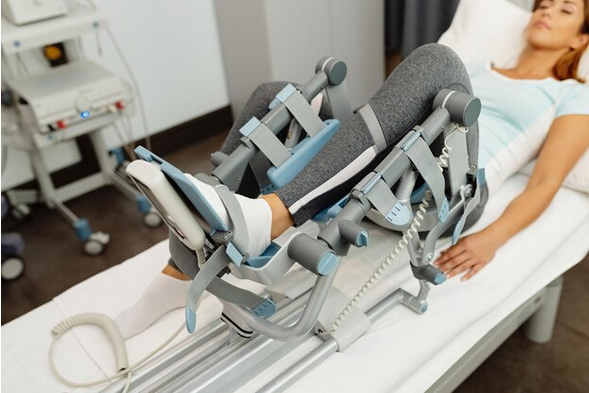Introduction:
In the realm of modern healthcare, innovative technologies continue to emerge, offering new and effective solutions for various health conditions. One such advancement gaining recognition is the decompression table, a therapeutic device designed to alleviate back pain and related spinal issues. This article explores the mechanism, benefits, and potential applications of decompression tables, shedding light on how they contribute to restoring individuals' quality of life.
Understanding Decompression Tables:
Decompression tables, also known as spinal decompression tables, are medical devices designed to provide non-invasive treatment for conditions such as herniated discs, sciatica, and degenerative disc disease. These tables operate on the principle of spinal decompression, a therapeutic technique aimed at relieving pressure on the spinal discs and promoting the healing of damaged structures.
The Decompression Process:
The decompression table works by creating a controlled and gentle traction force on the spine. Patients lie down on the table, and through a series of programmed movements, the table gently stretches and releases the spine. This process creates negative pressure within the discs, allowing herniated or bulging material to retract, reducing pressure on nerves and promoting the flow of nutrients and oxygen to the affected areas.
Benefits of Decompression Tables:
- Pain Relief: One of the primary benefits of decompression tables is their ability to provide effective pain relief for individuals suffering from chronic back pain. By alleviating pressure on the spinal discs, nerves, and surrounding tissues, decompression tables contribute to reduced pain levels and improved overall comfort.
- Promotion of Healing: The controlled traction applied by decompression tables helps promote the natural healing process of the spine. By creating an optimal environment for nutrient and oxygen exchange within the discs, the tables support the regeneration of damaged tissues, contributing to long-term recovery.
- Non-Invasiveness: Unlike surgical interventions, decompression tables offer a non-invasive approach to treating spinal conditions. This makes them a preferred option for individuals seeking alternatives to surgery, minimizing risks, and reducing the need for lengthy recovery periods.
- Improved Mobility and Functionality: Chronic back pain often limits an individual's range of motion and overall functionality. Decompression tables aim to address these issues by enhancing spinal flexibility and promoting better mobility. As patients undergo decompression therapy, they may experience improved posture, reduced stiffness, and enhanced overall functionality.
- Cost-Effective Treatment: In comparison to surgical procedures, decompression therapy is generally more cost-effective. It eliminates the need for hospitalization, anesthesia, and post-operative care, making it an economically viable option for those seeking relief from back pain.
- Reduced Dependency on Medications: Individuals with chronic back pain often rely on medications to manage their symptoms. Decompression tables provide an alternative by addressing the root cause of the pain. This may lead to a reduction in the need for pain medications, minimizing potential side effects and dependencies.
- Customizable Treatment Plans: Decompression tables allow healthcare professionals to customize treatment plans based on the specific needs and conditions of each patient. This personalized approach ensures that individuals receive targeted and effective therapy, maximizing the benefits of decompression tables for diverse spinal issues.
Applications of Decompression Tables:
- Herniated Discs: Decompression therapy has shown promising results in treating herniated discs. The controlled traction helps reduce pressure on the affected discs, allowing them to heal and alleviating associated symptoms such as radiating pain and numbness.
- Sciatica: Sciatica, characterized by pain radiating along the sciatic nerve, can be effectively addressed with decompression tables. The therapy aims to relieve pressure on the nerve roots, reducing pain and promoting the restoration of normal nerve function.
- Degenerative Disc Disease: Decompression tables offer a non-surgical option for individuals with degenerative disc disease. By enhancing nutrient exchange within the discs, these tables contribute to slowing down the degenerative process and alleviating associated pain.
Conclusion:
In conclusion, decompression table represent a promising advancement in the field of non-invasive spinal therapy, offering a range of benefits for individuals suffering from back pain and related conditions. Through their mechanism of controlled traction, these tables provide pain relief, promote healing, and improve overall functionality. The non-invasive nature of decompression therapy, along with its cost-effectiveness and customizable treatment plans, makes it an attractive option for those seeking alternatives to surgical interventions.
The versatility of decompression tables extends to various spinal conditions, including herniated discs, sciatica, and degenerative disc disease. As research and technological advancements continue, the potential applications of decompression tables may expand, providing even more individuals with an effective and accessible solution for their spinal health.
As with any medical intervention, it is crucial for individuals to consult with healthcare professionals to determine the suitability of decompression therapy for their specific conditions. While decompression tables offer promising results, the success of treatment may vary from person to person. Nonetheless, the overall positive outcomes reported by many patients underscore the potential of decompression tables in bringing individuals back to life, free from the constraints of chronic back pain.





Comments